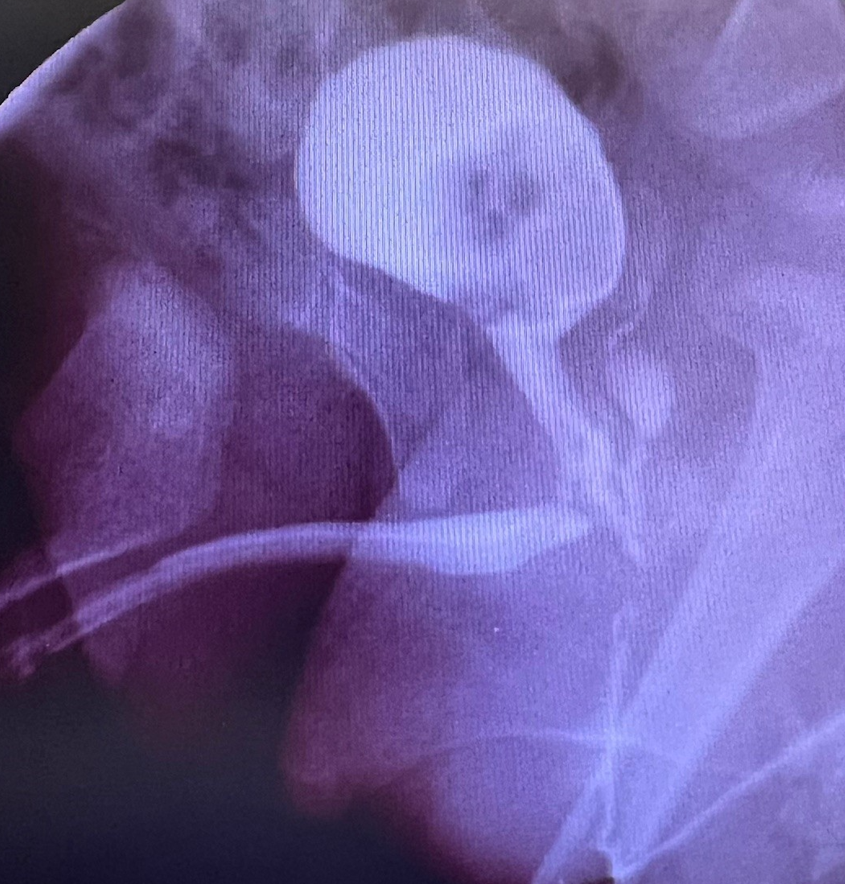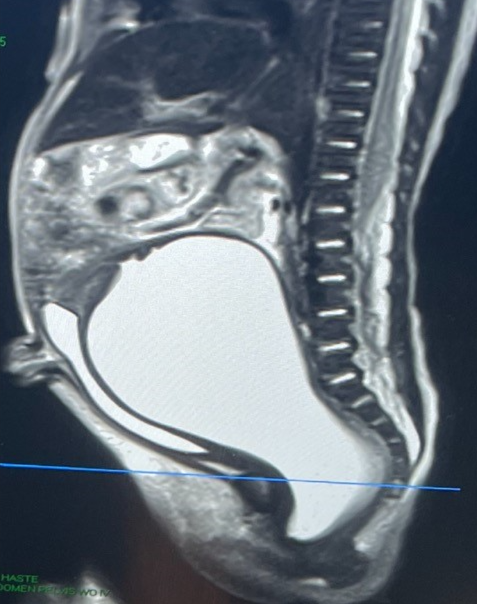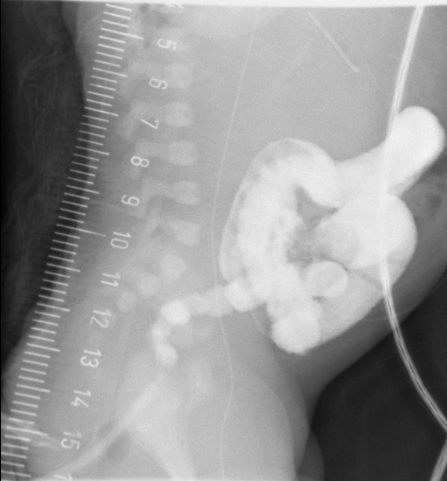Colorectal Conundrum: January 29, 2024
Colorectal Conundrum for January 29:
A male with a rectoperineal fistula undergoes a PSARP with mobilization of the rectum, both anterior and posterior rectal walls. In the days following surgery he starts to drain urine around the anoplasty consistent with a urethral injury. He is also voiding via the penis. A cystogram is shown below. How would you manage this situation?
Answer:
This patient has suffered from a urethral injury, and urine is draining out the posterior urethra into the perineum around the anoplasty. The key first step is to divert the urine with a suprapubic tube. A colostomy is not necessarily needed. The fistula might heal with diversion. If after a month or so a cystogram shows the persistence of the fistula, then a redo is needed with re-mobilization of the rectum, fully lifting the anterior rectal wall off of the urinary tract, and repair the urethra, with coverage of the posterior urethra with an ischiorectal fat pad. Then a voiding trial a month later with ultimate removal of the SP tube.

How would you handle this case?




